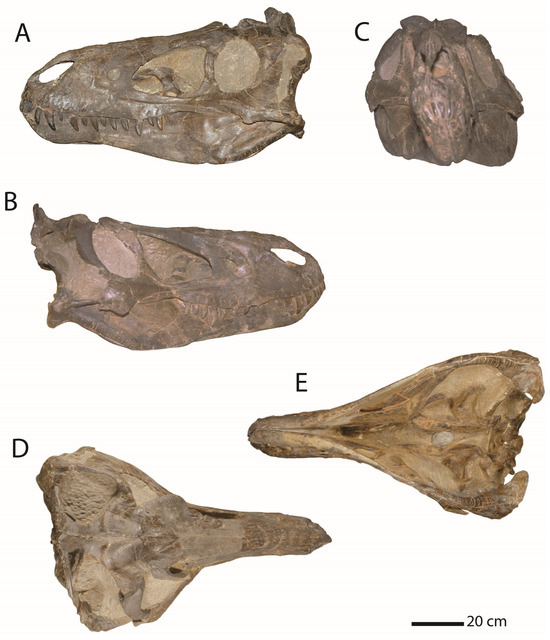2024-01-03 バース大学
◆この種はかつて別の種として命名され、後にT. rexの幼体と解釈されました。バース大学のNick Longrich博士とシカゴ大学のEvan Saitta博士は、成体のNanotyrannusおよび未発表のT. rexの幼体化石を再分析し、Nanotyrannusがほぼ満体サイズであり、急成長の幼体ではないことを示しました。これにより、NanotyrannusはT. rexの別種である可能性が高まりました。研究はFossil Studies誌に発表されました。
<関連情報>
- https://www.bath.ac.uk/announcements/new-research-shows-juvenile-t-rex-fossils-are-a-distinct-species-of-small-tyrannosaur/
- https://www.mdpi.com/2813-6284/2/1/1
ナノティラヌス・ランケンシス(恐竜目ティラノサウルス科)の分類学的位置づけ-小型ティラノサウルスの別個の分類群 Taxonomic Status of Nanotyrannus lancensis (Dinosauria: Tyrannosauroidea)—A Distinct Taxon of Small-Bodied Tyrannosaur
Nicholas R. Longrich and Evan T. Saitta
Fossil Studies Published: 3 January 2024
DOI:https://doi.org/10.3390/fossils2010001

Abstract
Tyrannosaurs are among the most intensively studied and best-known dinosaurs. Despite this, their relationships and systematics are highly controversial. An ongoing debate concerns the validity of Nanotyrannus lancensis, interpreted either as a distinct genus of small-bodied tyrannosaur or a juvenile of Tyrannosaurus rex. We examine multiple lines of evidence and show that the evidence strongly supports recognition of Nanotyrannus as a distinct species for the following reasons: 1. High diversity of tyrannosaurs and predatory dinosaurs supports the idea that multiple tyrannosaurids inhabited the late Maastrichtian of Laramidia; 2. Nanotyrannus lacks characters supporting referral to Tyrannosaurus or Tyrannosaurinae but differs from T. rex in >150 morphological characters, while intermediate forms combining the features of Nanotyrannus and T. rex are unknown; 3. Histology shows specimens of Nanotyrannus showing (i) skeletal fusions, (ii) mature skull bone textures, (iii) slow growth rates relative to T. rex, (iv) decelerating growth in their final years of life, and (v) growth curves predicting adult masses of ~1500 kg or less, showing these animals are subadults and young adults, not juvenile Tyrannosaurus; 4. growth series of other tyrannosaurids, including Tarbosaurus and Gorgosaurus, do not show morphological changes proposed for a Nanotyrannus–Tyrannosaurus growth series, and deriving Tyrannosaurus from Nanotyrannus requires several changes inconsistent with known patterns of dinosaur development; 5. Juvenile T. rex exist, showing diagnostic features of Tyrannosaurus; 6. Phylogenetic analysis suggests that Nanotyrannus may lie outside Tyrannosauridae. Tyrannosaur diversity before the K-Pg extinction is higher than previously appreciated. The challenges inherent in diagnosing species based on fossils mean paleontologists may be systematically underestimating the diversity of ancient ecosystems.


